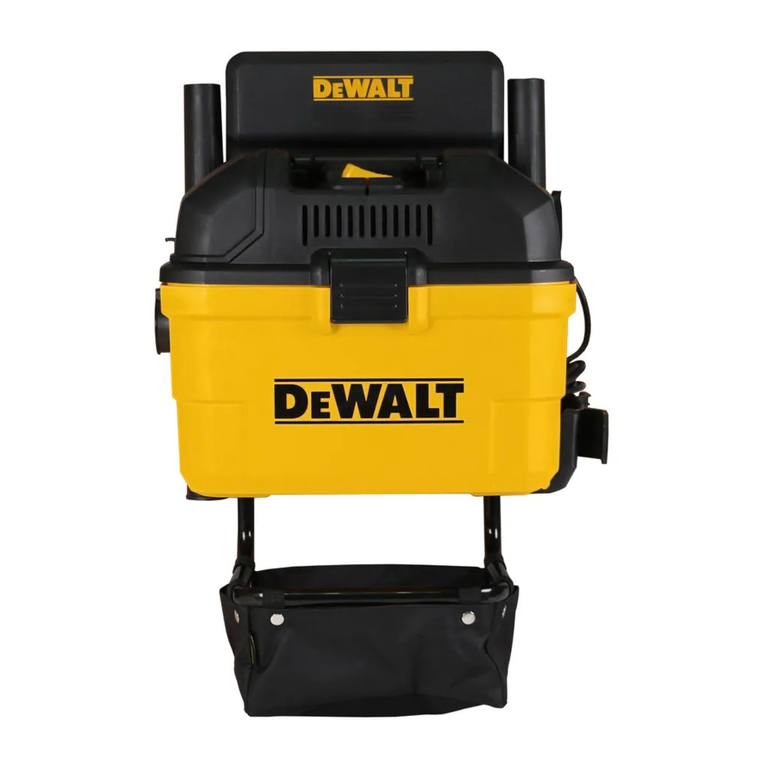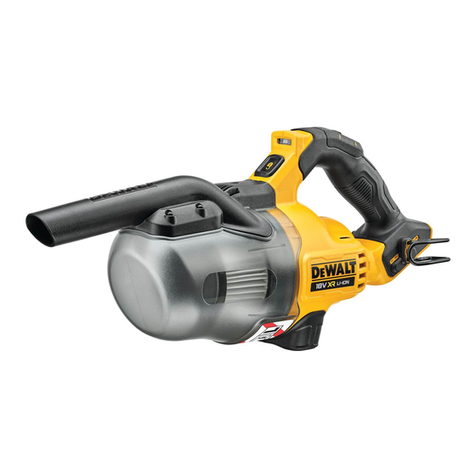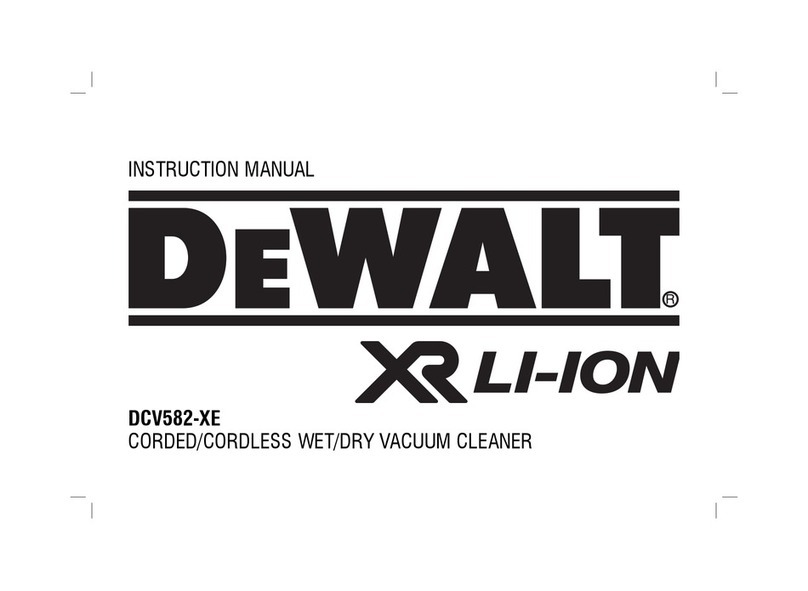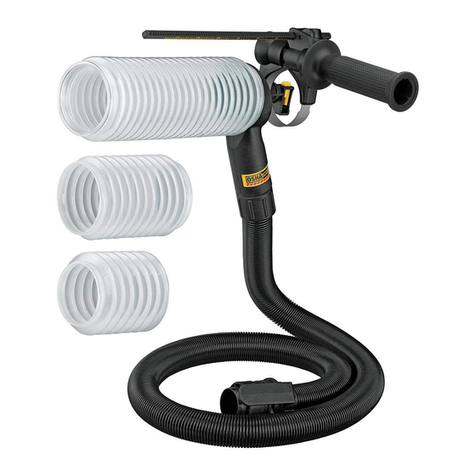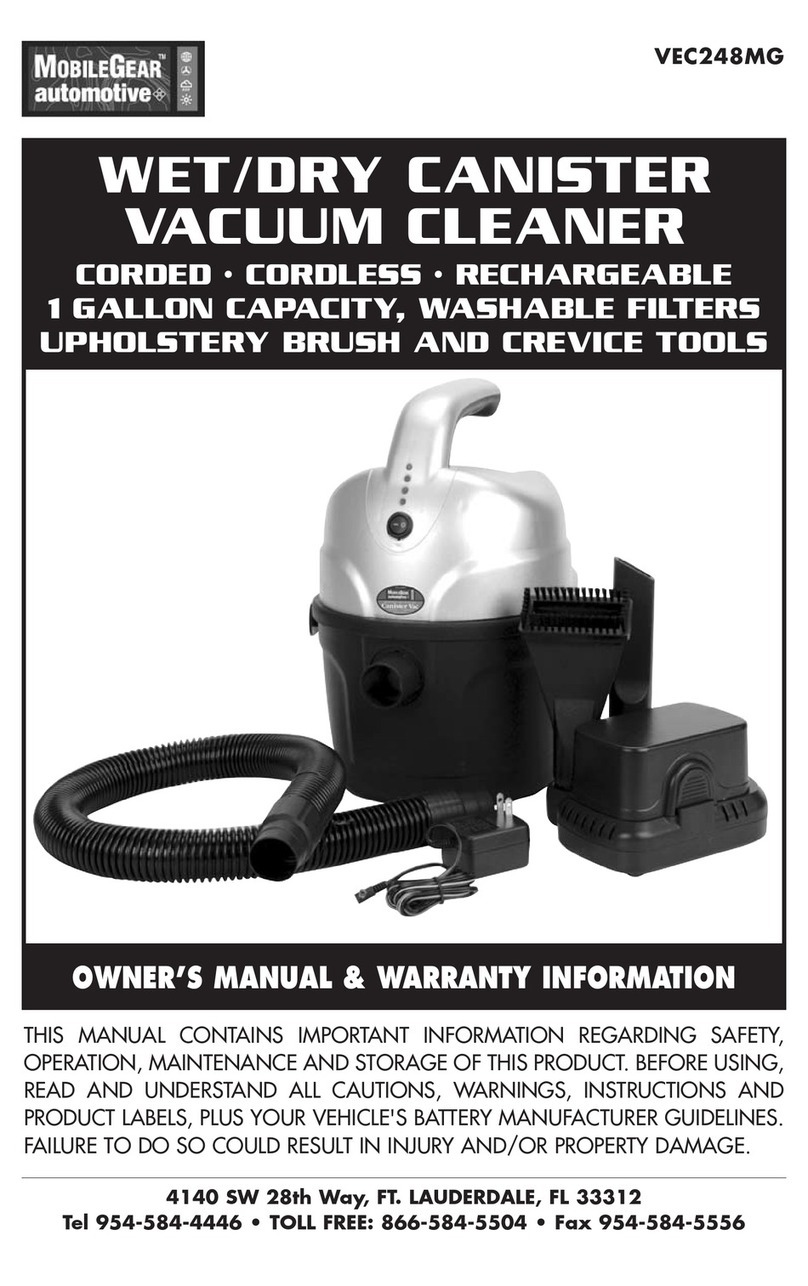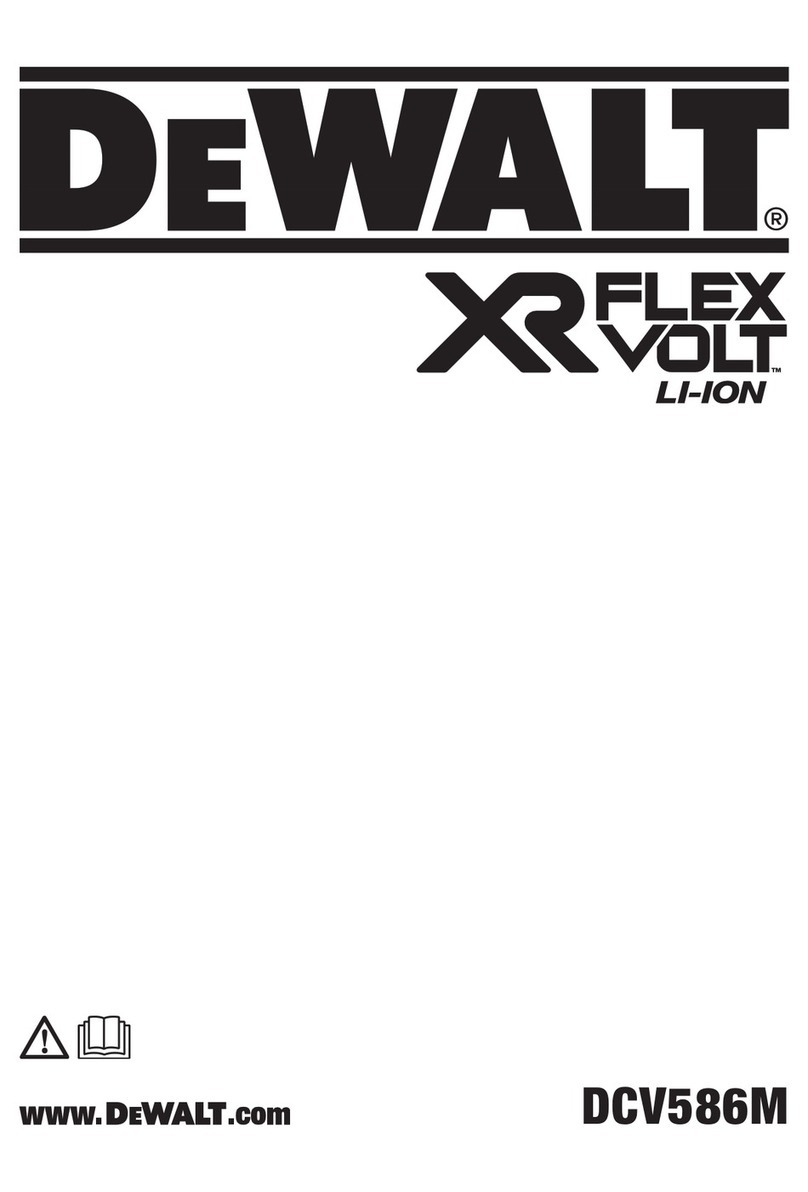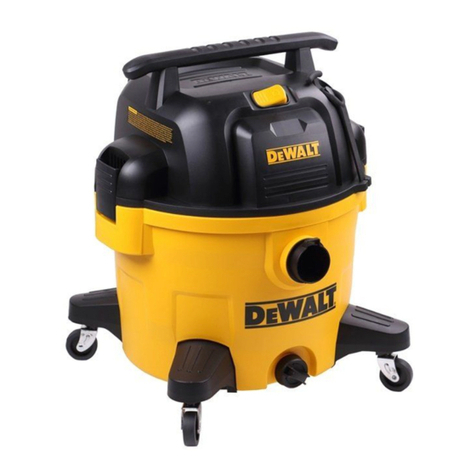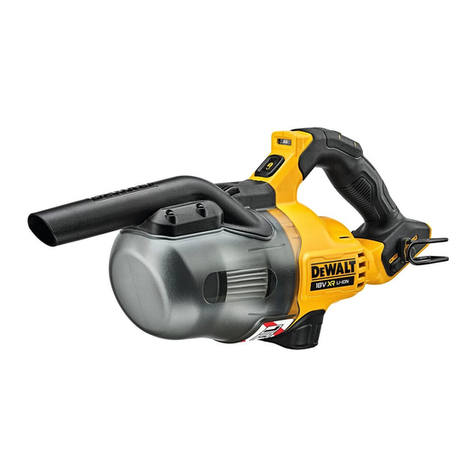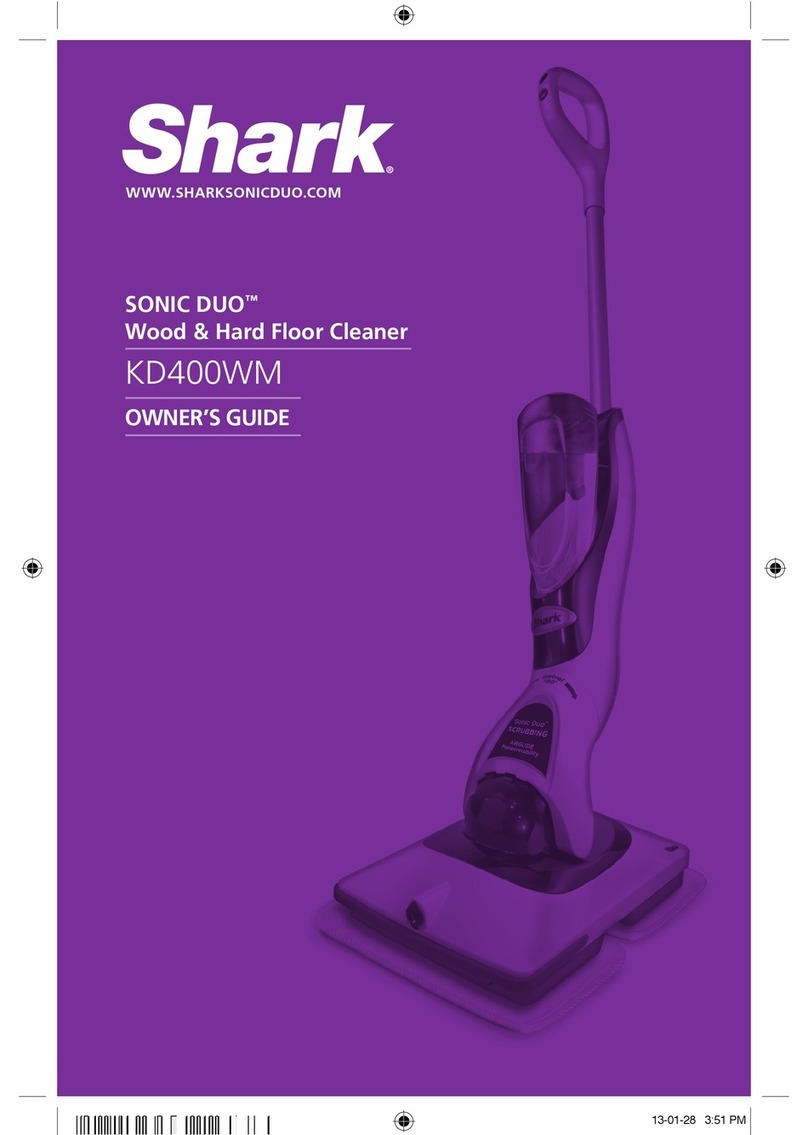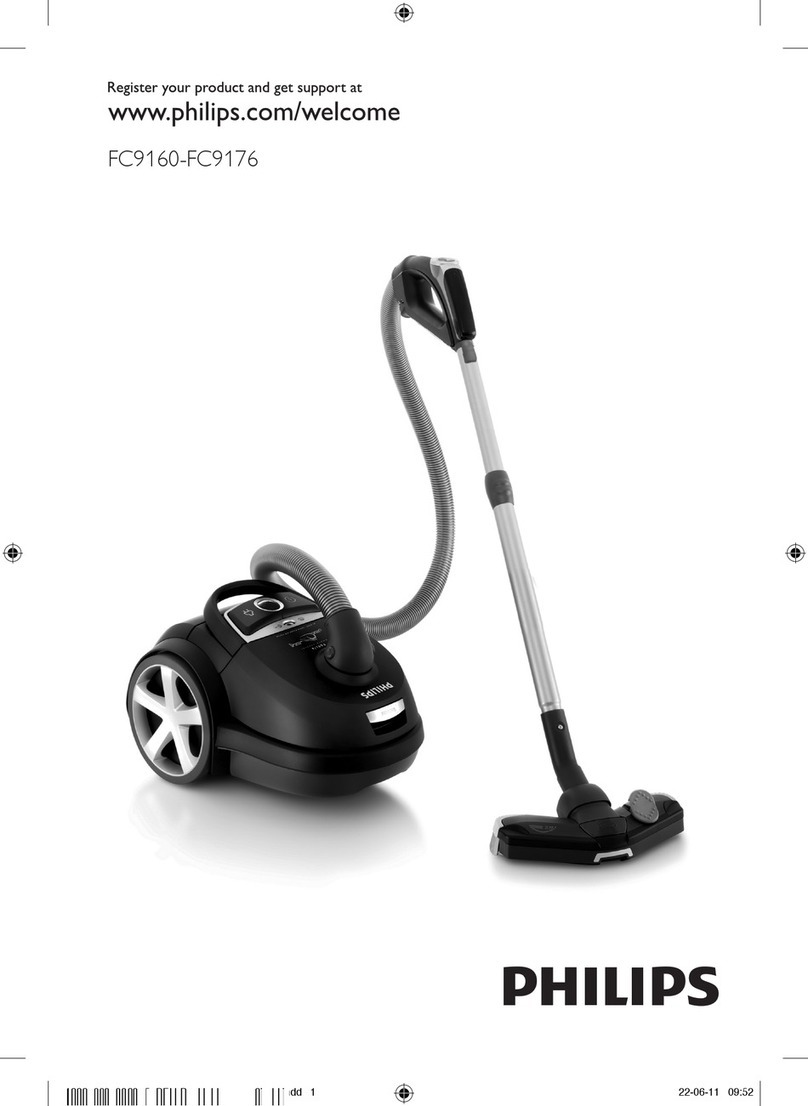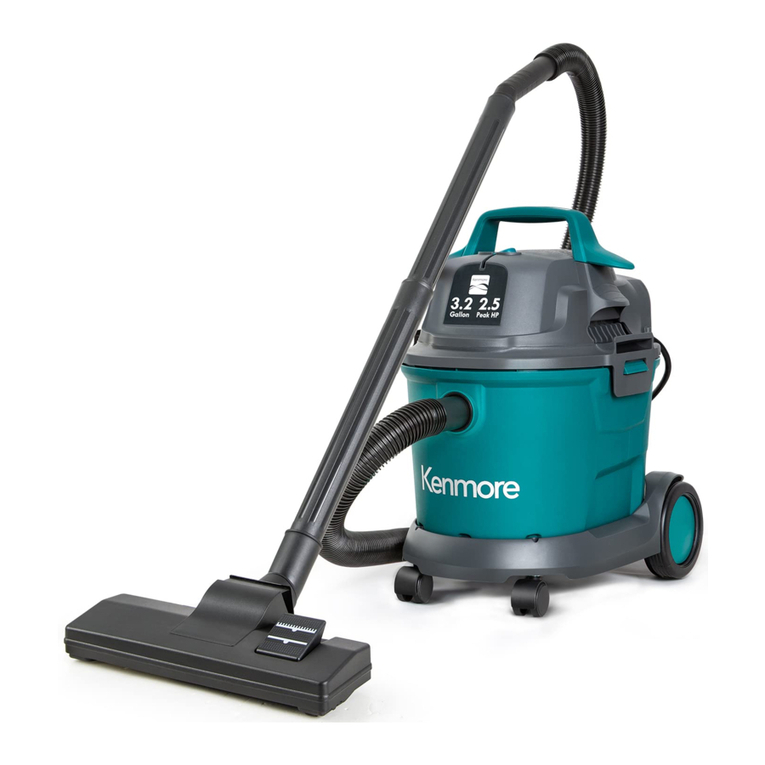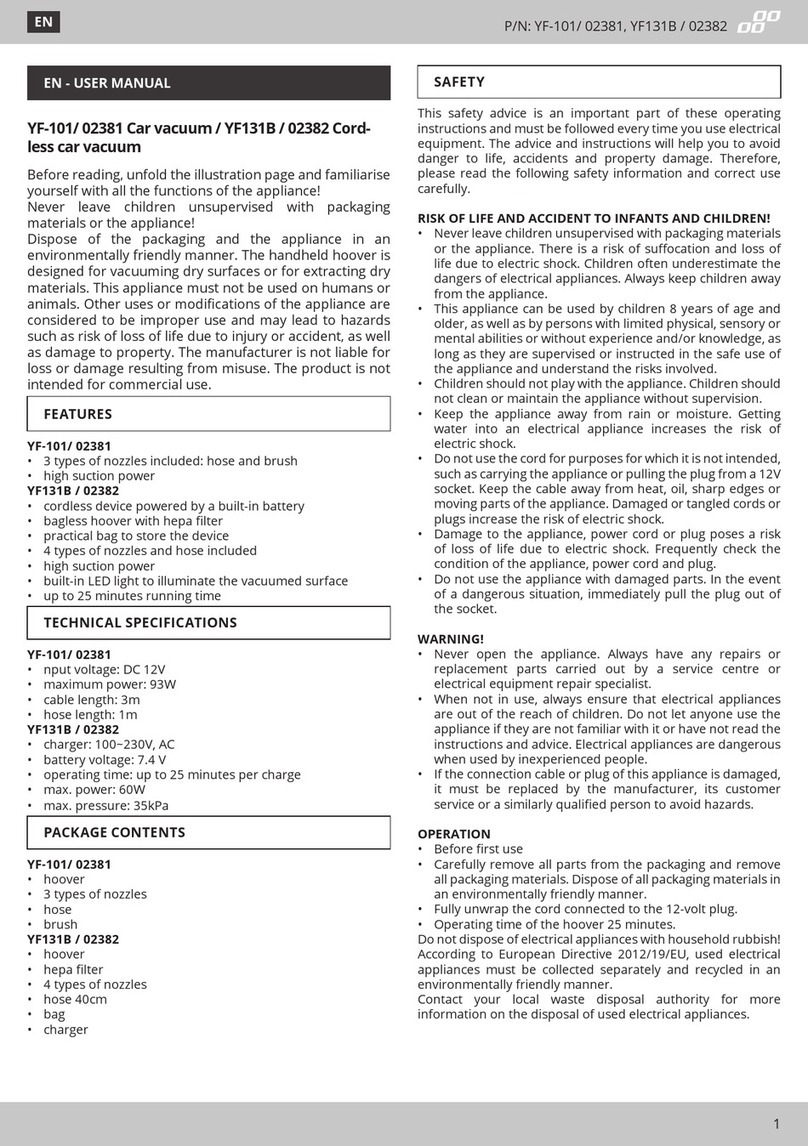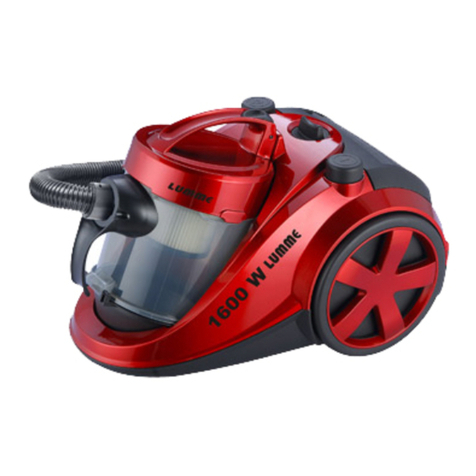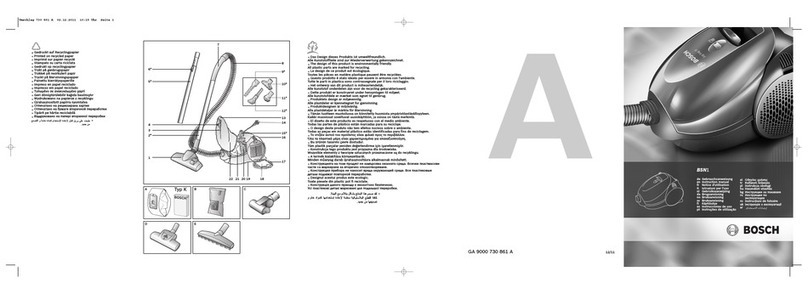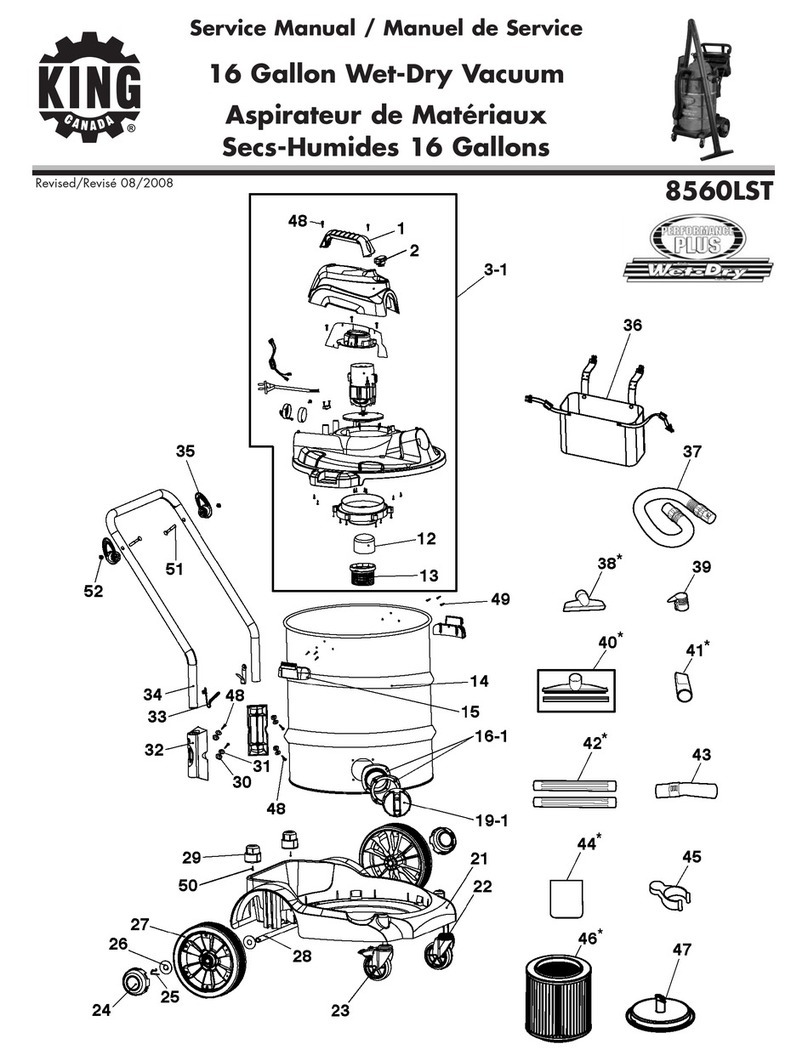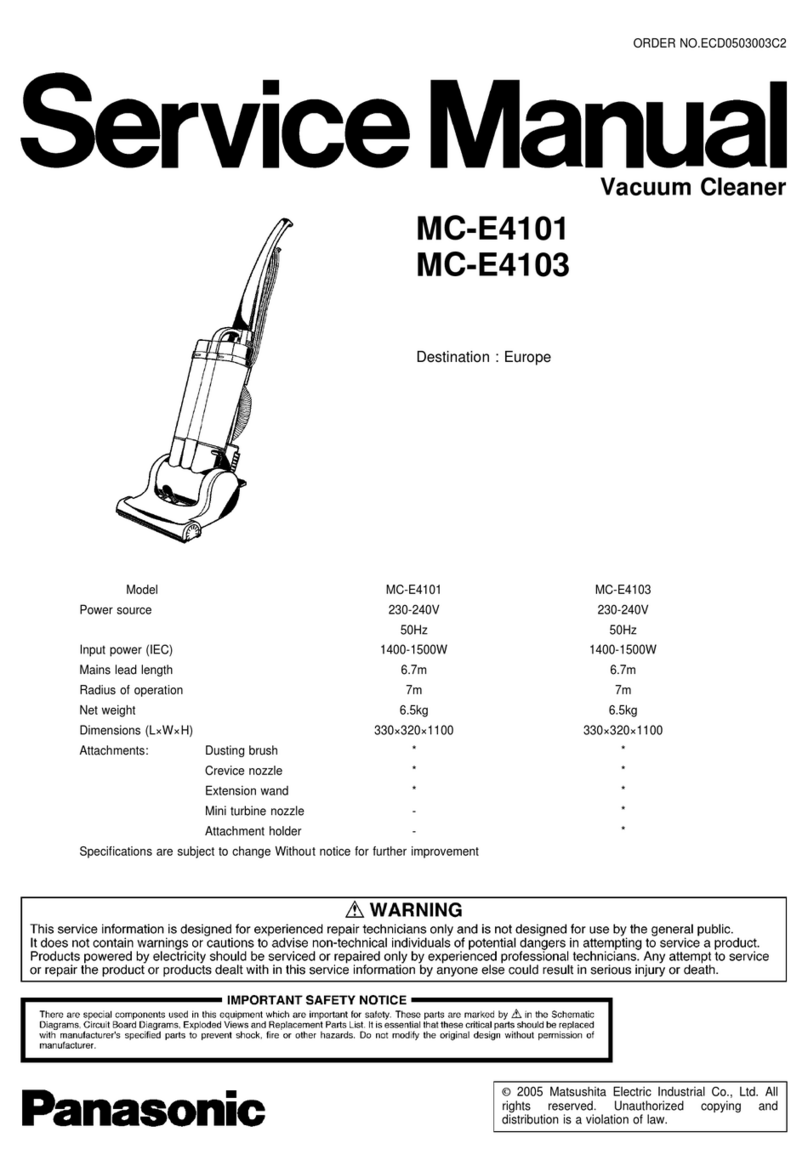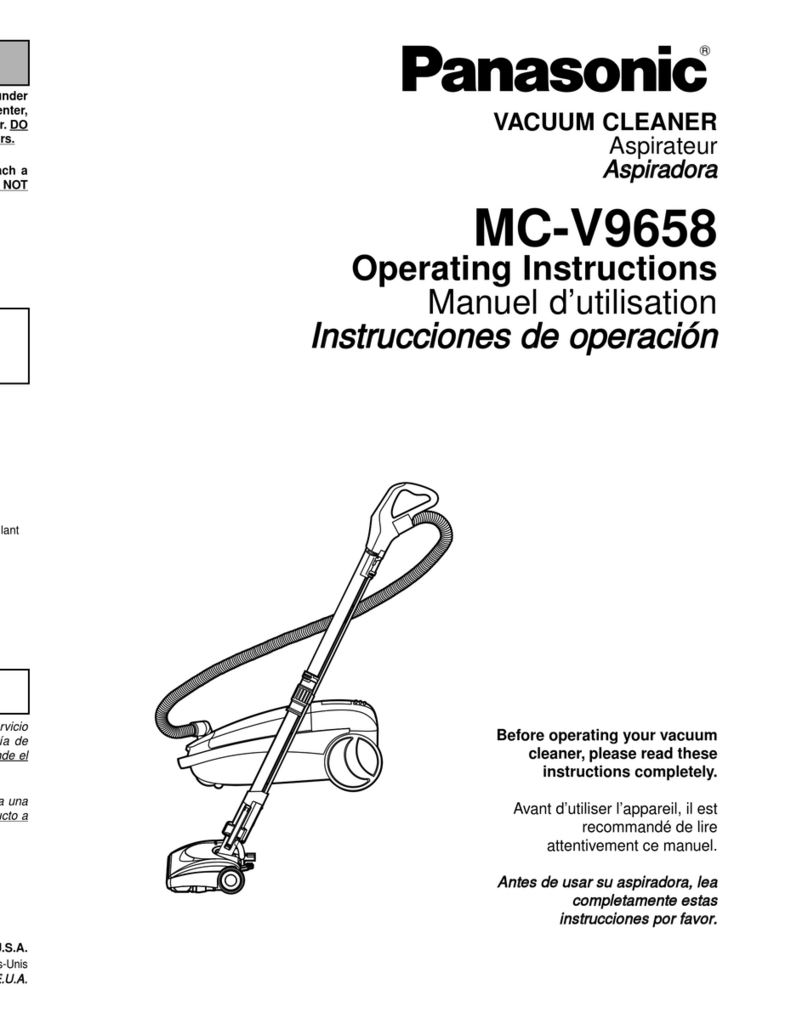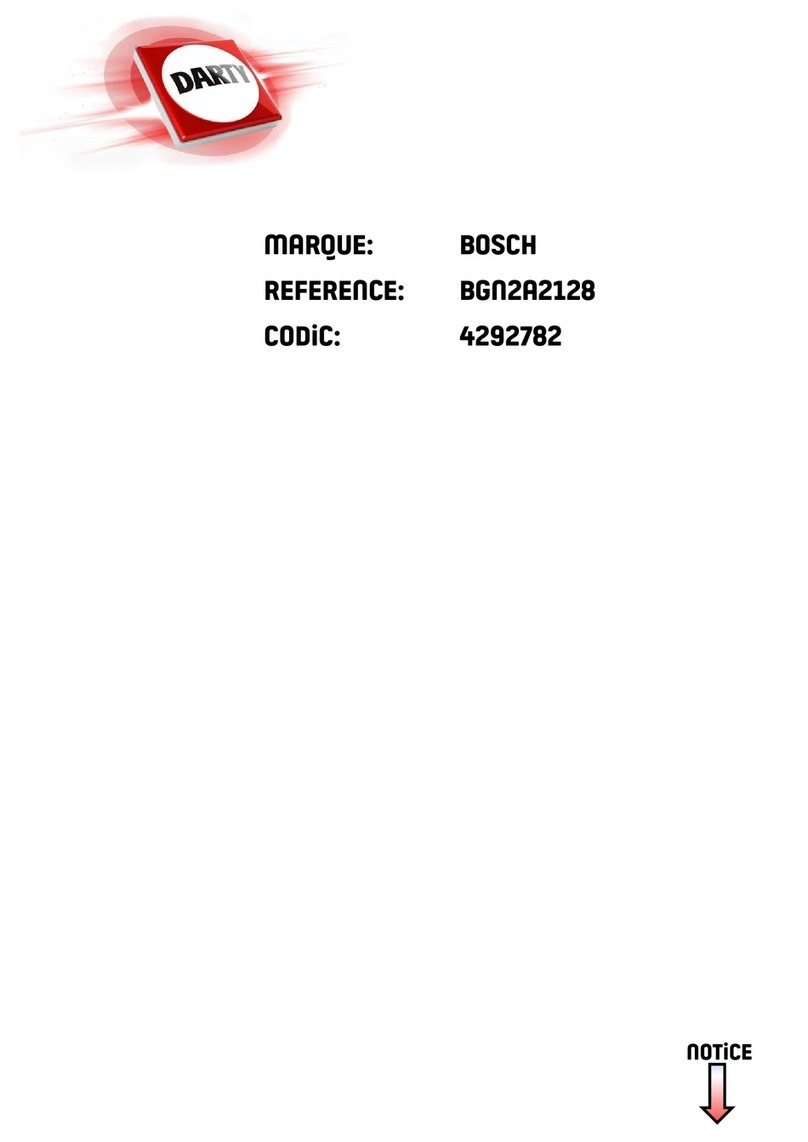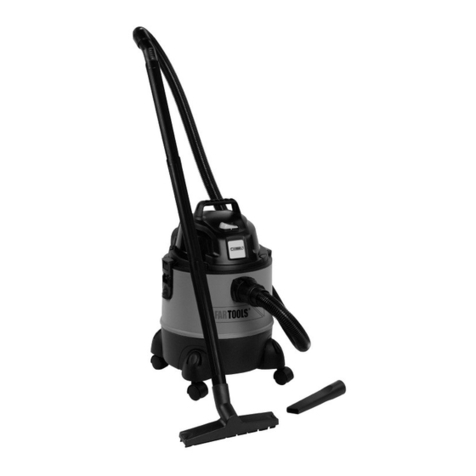9
ENGLISH
• Do not use to vacuum hazardous, toxic or
carcinogenic materials, such as asbestos
or pesticide.
• Do not use vacuum without filters in place.
• Some wood contains preservatives which
can be toxic. Take extra care to prevent
inhalation and skin contact when working
with these materials. Request and follow
any safety information available from your
material supplier.
• Do not use vacuum as a step ladder.
• Do not place heavy objects on vacuum.
Residual Risks
In spite of the application of the relevant safety
regulations and the implementation of safety
devices, certain residual risks cannot be avoided.
These are:
– Risk of pinching or crushing of fingers.
– Risk of inhaling fumes when working
with adhesives.
– Risk of inhaling hazardous dust.
– Risk of personal injury due to prolonged use.
Markings on Tool
The following pictograms are shown on the tool:
Read instruction manual before use.
DATE CODE POSITION (FIG. 2)
The date code (X), which also includes the year
of manufacture, is printed into the housing.
Example:
2015 XX XX
Year of Manufacture
Important Safety Instructions
for All Battery Chargers
SAVE THESE INSTRUCTIONS: This manual
contains important safety and operating
instructions for compatible battery chargers
(refer to Technical Data).
• Before using charger, read all instructions
and cautionary markings on charger, battery
pack, and product using battery pack.
WARNING: Shock hazard. Do not
allow any liquid to get inside charger.
Electric shock may result.
WARNING: We recommend the
use of a residual current device with
a residual current rating of 30mA
or less.
CAUTION: Burn hazard. To reduce
the risk of injury, charge only DWALT
rechargeable batteries. Other types of
batteries may burst causing personal
injury and damage.
CAUTION: Children should be
supervised to ensure that they do not
play with the appliance.
NOTICE: Under certain conditions,
with the charger plugged into the
power supply, the exposed charging
contacts inside the charger can be
shorted by foreign material. Foreign
materials of a conductive nature
such as, but not limited to, steel
wool, aluminum foil or any buildup
of metallic particles should be kept
away from charger cavities. Always
unplug the charger from the power
supply when there is no battery pack
in the cavity. Unplug charger before
attempting to clean.
• Do not pull or carry this appliance by the
cord, use the cord as a handle, close a
door on the cord, or pull the cord around
sharp edges or corners. Do not run the
appliance over the cord. Keep cord away
from heated surfaces.
• DO NOT attempt to charge the battery
pack with any chargers other than the
ones in this manual. The charger and
battery pack are specifically designed to
work together.
• These chargers are not intended for
any uses other than charging DWALT
rechargeable batteries. Any other uses
may result in risk of fire, electric shock
or electrocution.
• Do not expose charger to rain or snow.
• Pull by plug rather than cord when
disconnecting charger. This will reduce risk
of damage to electric plug and cord.
• Make sure that cord is located so that it
will not be stepped on, tripped over, or
otherwise subjected to damage or stress.
• Do not use an extension cord unless it
is absolutely necessary. Use of improper
extension cord could result in risk of fire,
electric shock, or electrocution.
• Do not place any object on top of charger
or place the charger on a soft surface
that might block the ventilation slots
and result in excessive internal heat.
Place the charger in a position away from




